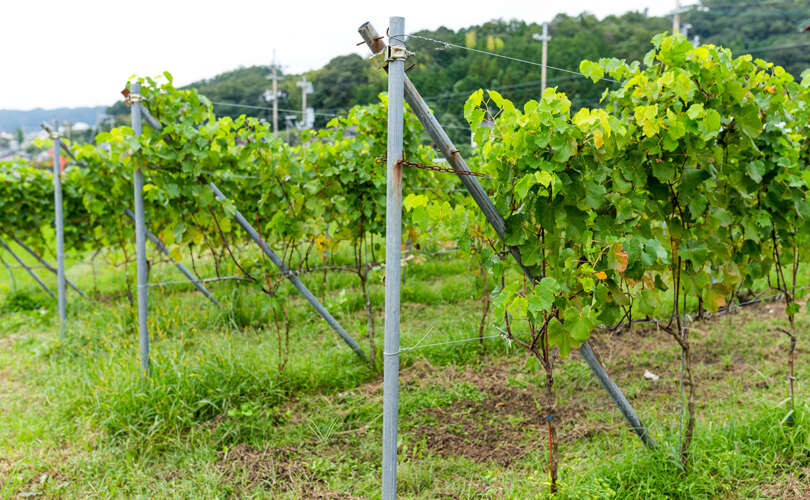Trieste, a city which is a bridge between Western Europe, South-Central and Eastern Europe, which blends the Mediterranean and Central European characters. The ideal stage to tell a variety of stories. The directors who come here for the first time are fascinated; those who already worked here, return. For large international productions it is the ideal location for recreating landscapes which may be British, Russian, American, or Libyan.
Trieste is fascinating and dark, sunny and unusual, provincial and international, sometimes invisible but able to pierce the screen. Trieste is a city of architecture, sea and sunsets, buffeted by the Bora wind. A city which together with the great charm of the past keeps an industrial structure, making it full of contradictions.
And then there is the territory of its Province, which includes the towns of Duino-Aurisina/Devin Nabrežina, Monrupino/Repentabor, Muggia, San Dorligo della Valle/Dolina and Sgonico/Zgonik, where, in a few kilometers, you can have cultural experiences, food and wine, sports and leisure facilities that are hard to find in any other such narrow geographical areas.
In Trieste one lives the cinema all year round. From July to January, a number of international Festivals (the Trieste Film Festival, ShorTS, The Thousand Eyes, the Latin- American Festival and Trieste Science + Fiction) enliven the city’s life.
It was here in Trieste that the first university course on film history in Italy started. It is where many film makers and those involved in the cinema were born. It is here that we have the Associazione Casa del Cinema (The Home of Cinema Association), the essential link between the realities of the film industry in the Trieste territory, that integrates activities, experiences, skills and assets.
To enhance all this, in 2016 the “Esterno/Giorno” itinerary was created inside a project promoted by the Casa del Cinema di Trieste, in partnership with Delegazione FAI di Trieste, l’Ordine degli Architetti PPC of the province of Trieste, Associazione Kinoatelje, Lister Sartoria Sociale and financed by the Province of Trieste.
The itinerary brings together a selection of films, TV series, videoclips and adverts shot in Trieste and its province. The contents of this itinerary are also available in Slovene.
Info: www.casadelcinematrieste.it
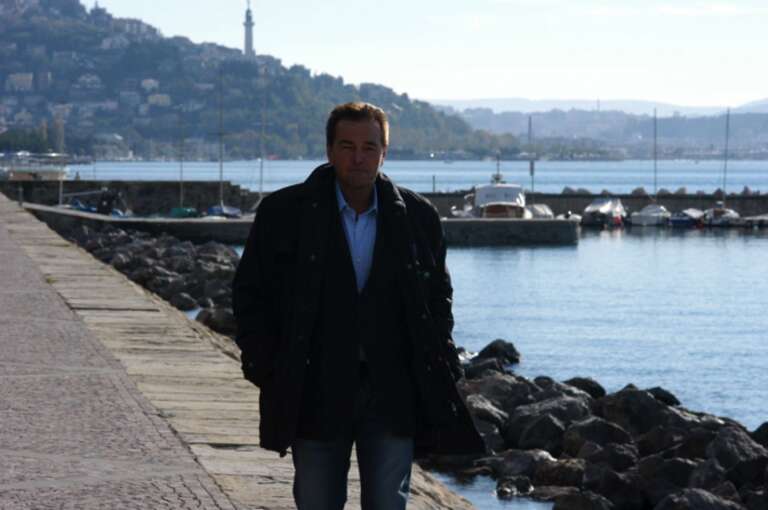
A Case of Conscience 3
Taken from a short story by Leonardo Sciascia, the film tells the story of a young lawyer who decides to leave his job to help the most vulnerable and needy. The series has now reached its fifth chapter (in progress) and is set and filmed in Trieste, where for the purposes of the story, the seat of the Prefecture becomes the Court of Trieste, while the interior of the Palazzo Gopcevich, overlooking the Ponterosso canal, becomes the lawyer’s chambers. The protagonist, Rocco Tasca, is played by Sebastiano Somma. Among the locations used in Trieste are the waterfront, the Grignano marina,
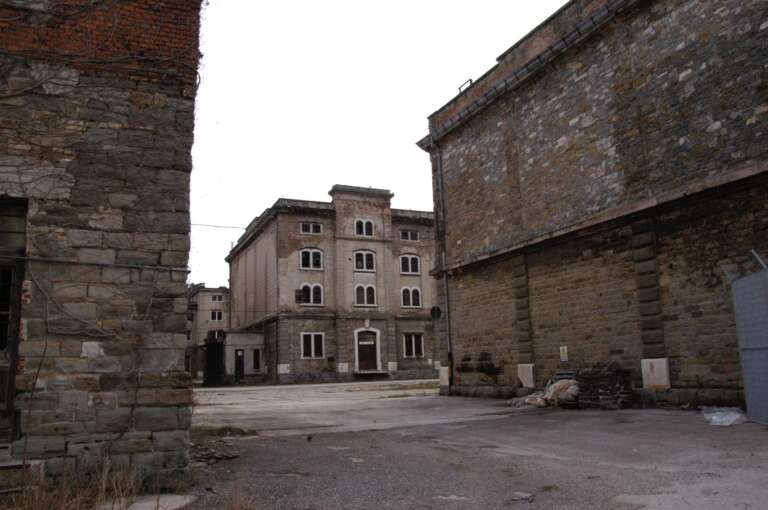
A Love And Revenge
Loosely based on ‘The Count of Monte Cristo’, the drama tells the story of Lorenzo Berman (Alessandro Preziosi), who gets into trouble because of some friends. His life is driven by revenge and one day he comes back with a new identity just to take back what is his and destroy all the others, including his girlfriend. The director, impressed by this border town wedged between the sea and the mountains, chose Trieste as a set for outdoor settings. The Napoleonic Road and the Old Port – Porto Vecchio merge in a unique landscape designed to stand in for disadvantaged

Audi A4 quattro edition
Two episodes of the advertising campaign were shot in Trieste. The first in the Boschetto (woods) or rather the Farneto Park: 915,400 square meters, overlooking the district of San Giovanni and stretching from San Luigi to Melara to Rio Farneto. Even during the wars, weekend outings to the Boschetto were a custom of the Triestini. The park, which was renovated in 2000 with the recovery of historical paths and the creation of rest areas, is open to the public and well-served by public transport. The second episode is shot on the Molo Audace Pier with a reporter in search of
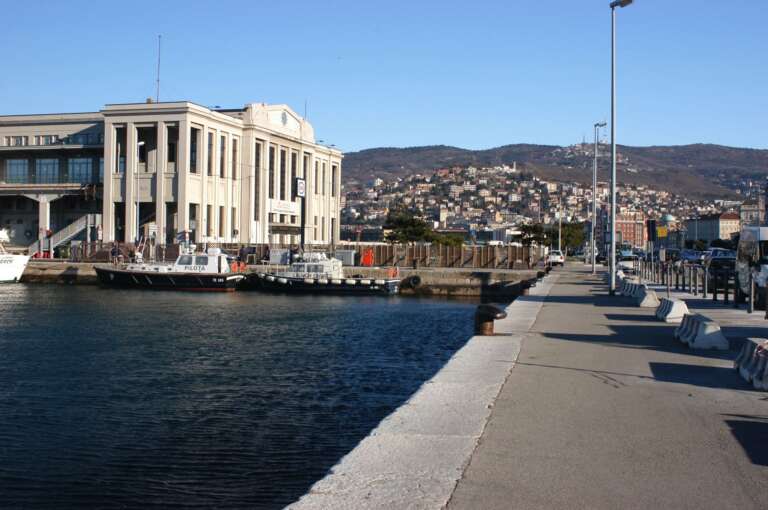
Broken
‘Broken’ is the first single from the fourth album by the singer-songwriter Elisa Toffoli. The song, sounding decidedly acoustic, quickly became one of the top five of the best-selling singles in Italy. The videoclip was shot in the autumn of 2003 between Grado, Monfalcone (home town of the singer) and Trieste, which shows the Molo Audace – Pier. Originally known as Molo San Carlo, it is 246 meters long, and with the passing of time, it lost its mercantile role and became a destination for lovely walks ‘into’ the sea and for the mooring of vessels passing through, or beautiful
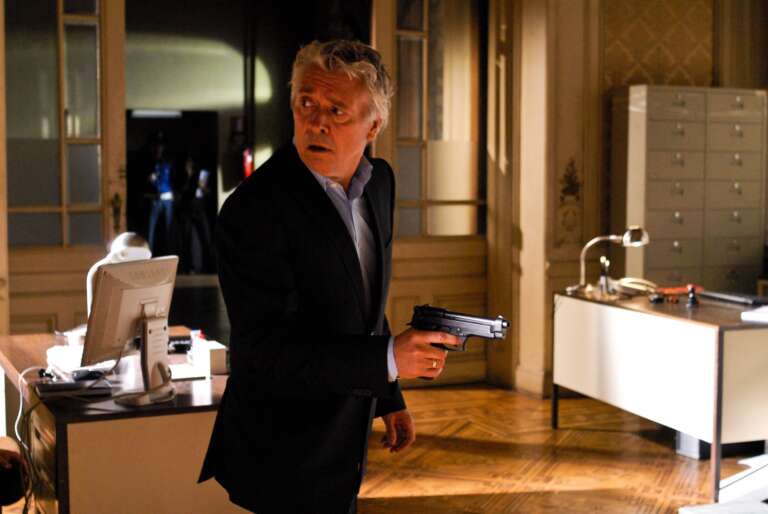
Commissioner Laurenti
Trieste, a place where literature permeates every corner of the city. Here, writers such as Italo Svevo, James Joyce, Umberto Saba, Virgilio Giotti, Scipio Slataper, Bobi (Roberto) Bazlen, Giani Stuparich, Carlo Stuparich, Silvio Benco lived and worked, attended the literary cafés and left their mark. Writers who breathed the atmosphere of multicultural Trieste (nineteenth-twentieth century), and who brought it to us in their writings. It is in Trieste that Joyce reconstructs, in large part, the Dublin of Ulysses, and it is the daily life of Trieste that shines through Svevo’s books. In the contemporary literary scene, as well as Italian
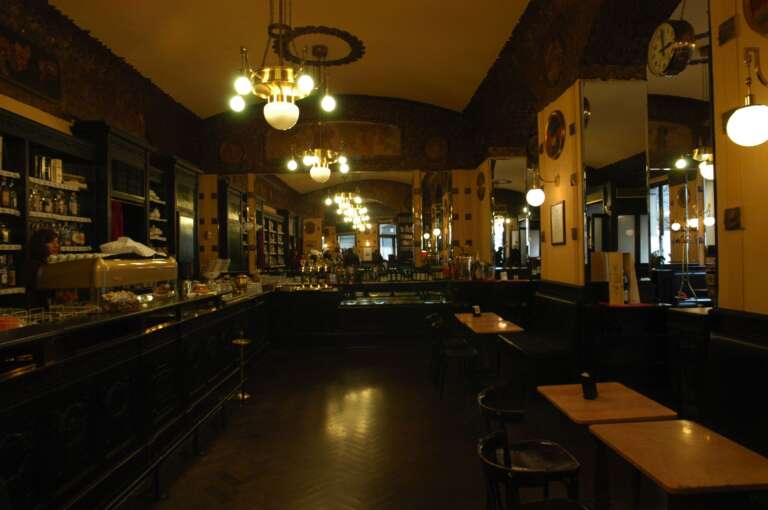
Dark Evenings
‘Dark evenings’ can be considered the pièce de résistance of Tiziano Ferro. Second track from the album ‘111 One hundred and eleven’, the single was released on CD only in Spain and Germany, while in Italy it stayed at the top of the charts for nine weeks as the most played track on the radio. The videoclip was shot in black and white, all in Trieste. The backdrop to Tiziano Ferro walking can be recognized as the neighbourhood of Roiano, and in particular, the former factory of Stock, Piazza Hortis in the heart of Cavana, the Rozzol Melara neighbourhood and
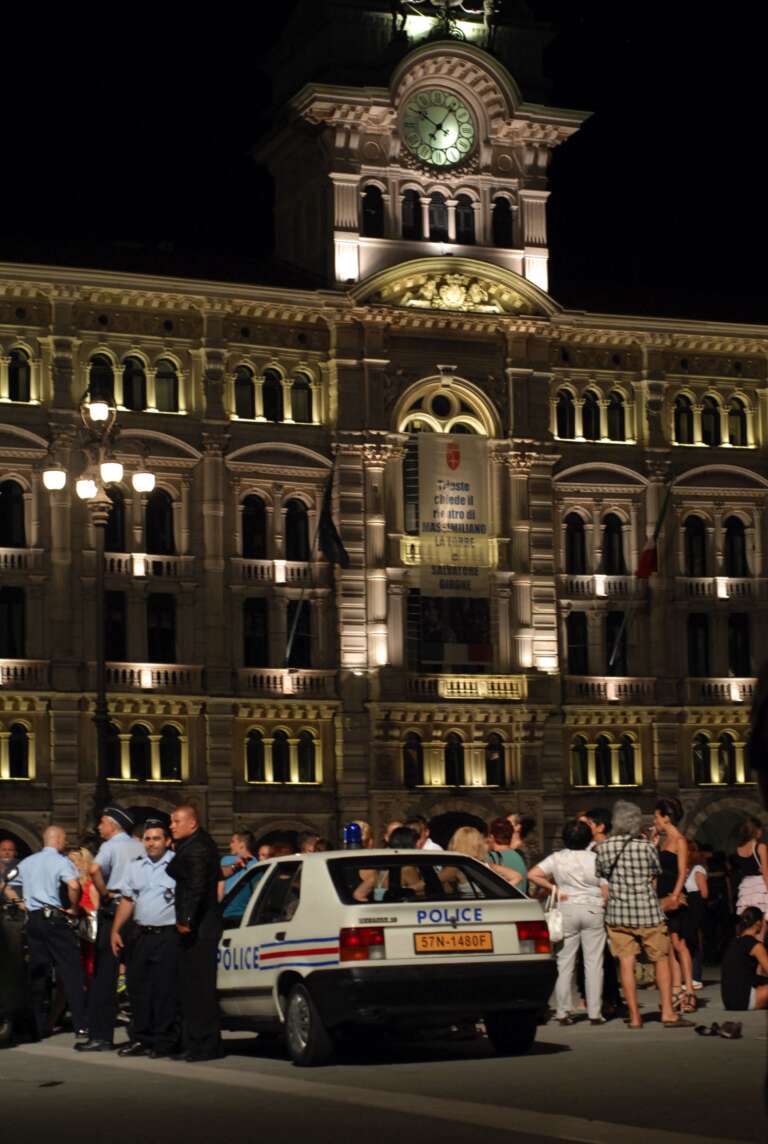
Diana
The film focuses in particular on the final two years of the Princess of Wales’ life and how, through volunteering, social struggles and humanitarian campaigns , she discovered the meaning of happiness and consolidated her reputation that made her loved by the British people and from around the world. Naomi Watts in the role of Lady Di, came to Trieste where some scenes were filmed. The Parisian night of August 31, 1997 was recreated here: Piazza Unità d’Italia became the Place Vendôme and the historic “Caffè degli Specchi” (“Cafe of Mirrors”) was transformed into the Ritz Hotel in Paris, from
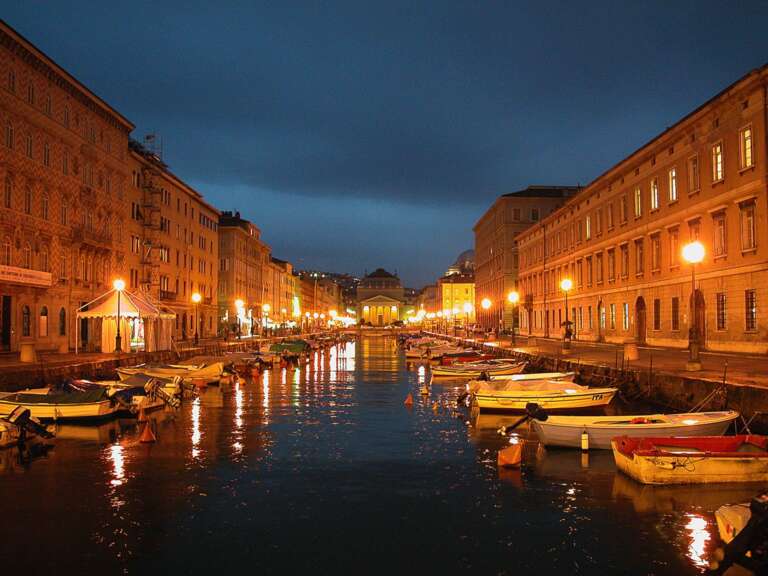
Different From Whom?
Piero is a young homosexual politician in love with Remo, with whom he lives. When he is a candidate in municipal elections he is teamed up with Adele, a moderate and conservative colleague. The relationship between the two quickly turns into a strong attraction. Remo finds himself to be the third wheel. Excited by the versatility and beauty of the area, Cattleya chose Trieste as the location: the Grand Canal, the indoor market, the hall of the Municipal Council, the waterfront and the Grand Hotel Duchi d’Aosta, where in 1768, J.J. Winckelmann, archaeologist, art historian and one of the fathers
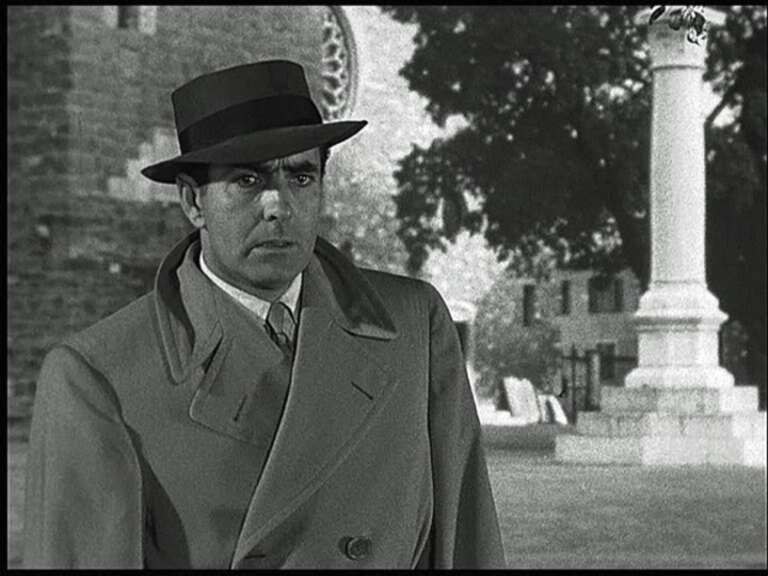
Diplomatic Courier
Thriller set after the end of the 2nd World War on a train from Salzburg – Trieste where US and Soviet agents fight to get a valuable micro-photographed document hidden in a gold watch. Among the first shots, we see the Trieste Central Station. Opposite the main entrance there is Piazza della Libertà (Liberty Square), with the monument to Empress Elisabeth. It was made from bronze and Carrara marble at the end of the nineteenth century with funds raised spontaneously by the people, who were distraught at the death of their beloved Sissi. One of the most famous scenes is
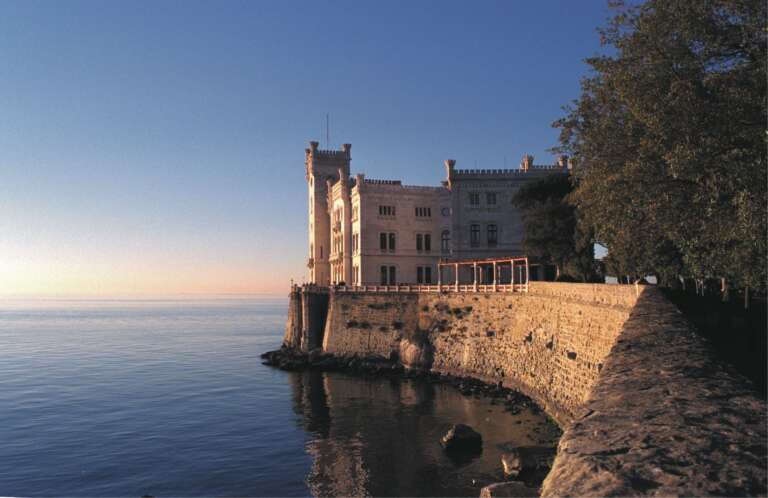
Go Where Your Heart Takes You
Olga, an elderly woman, lives with her husband Ernesto, her daughter Ilaria and her granddaughter Marta. Born and raised on the Karst, she has a life of suffering and family dramas. She writes a letter to her granddaughter in America, tracing her life, describing her feelings and telling some secrets. Cristina Comencini chose Trieste and Opicina for his film which compares three generations of women. Olga writes the letter from the town of Villa Opicina, but the events are recounted in the city. We recognize Miramare Castle, the park of Basovizza, Samatorza and Monrupino, where you can still today visit

Goddess Music
‘Goddess Music’ from Piero Pelù, from the album ‘Soggetti Smarriti – Lost Subjects’ was shot in 2004 entirely in Trieste in the Rozzol Melara housing estate. The video is about a country ruled by a totalitarian regime where music is banned. The army has raided every house, burning or destroying anything related to the Goddess of music. The housing estate of Rozzol Melara is called the ‘quadrilateral’. This is a huge concrete building built in the seventies after the socio-architectural theories of Le Corbusier. The complex has 468 apartments and 2,500 residents and the intentions of the designers was to
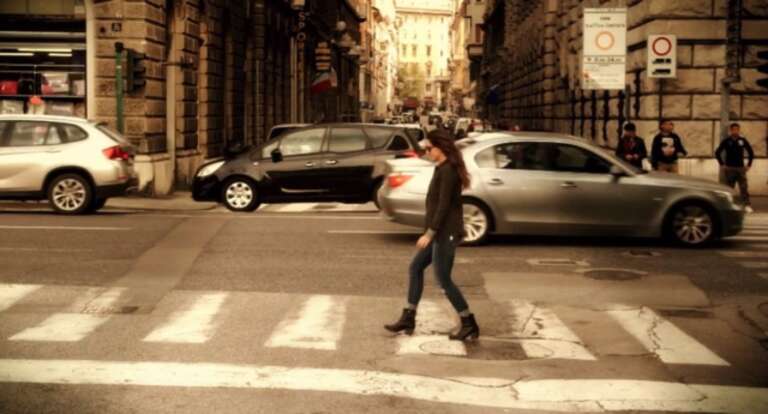
Hugo Boss Eyewear
The advert for the famous brand’s campaign entitled “See New Shapes, Take New Roads” is shot entirely in Trieste and shows the city from a different perspective, looking for details and unexpected forms. We can recognize Viale XX Settembre, the alleyways of the Cavana neighbourhood, the underpass of the railway station, via San Nicolò and the Tempio Mariano di Monte Grisa (Temple dedicated to Mary, in Monte Grisa) whose massive structure dominates Trieste and its gulf. A place of prayer and worship since 1959, with its grandeur and sobriety, it seems to have sprung from the rocky ridge of the
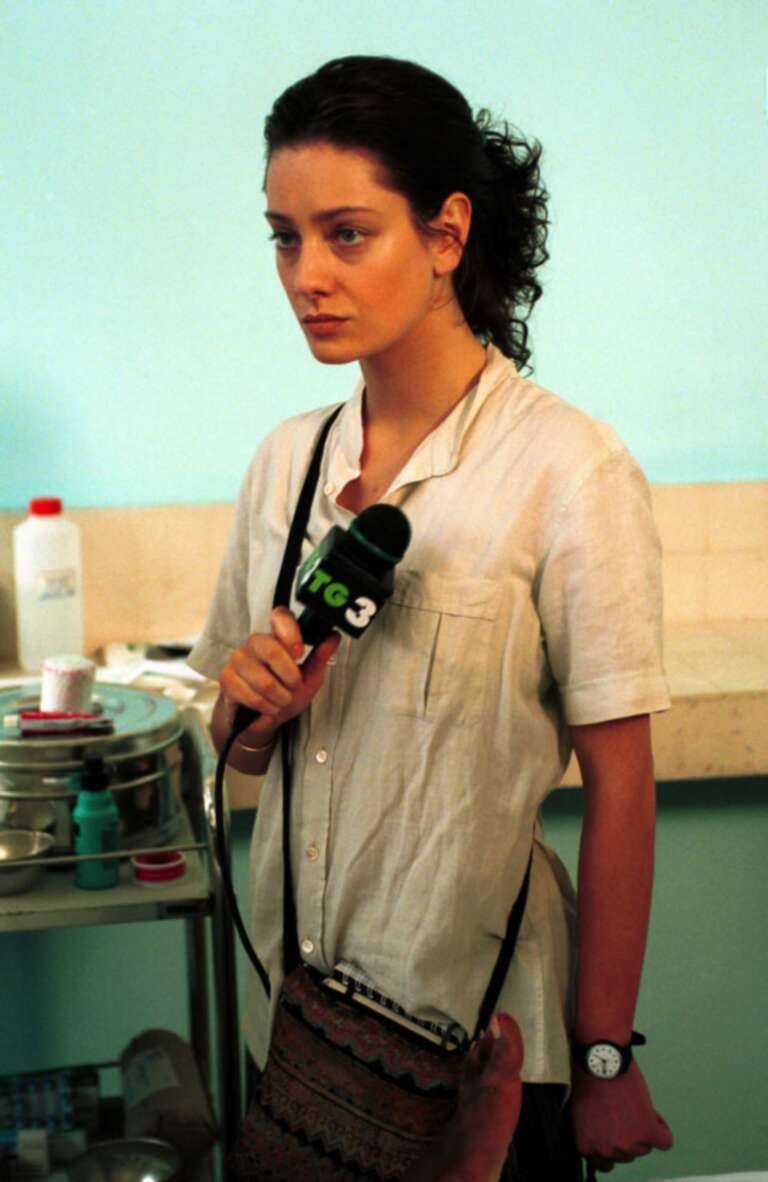
Ilaria Alpi – The Cruellest Day
History of the TG3 (Italian news channel) reporter, Ilaria Alpi played by Giovanna Mezzogiorno, who was killed in an ambush in Mogadishu on March 20, 1994. The film reconstructs the last month in the life of the journalist and of the cameraman of the Videoest (documentary maker) of Trieste, Miran Hrovatin, killed by a gunman while they were filming a report in Somalia. Orgnani, half Friulian, filmed the first part of the film in Trieste as he was struck by the great variety and charm of the location. A week of filming, which saw the old part of the New
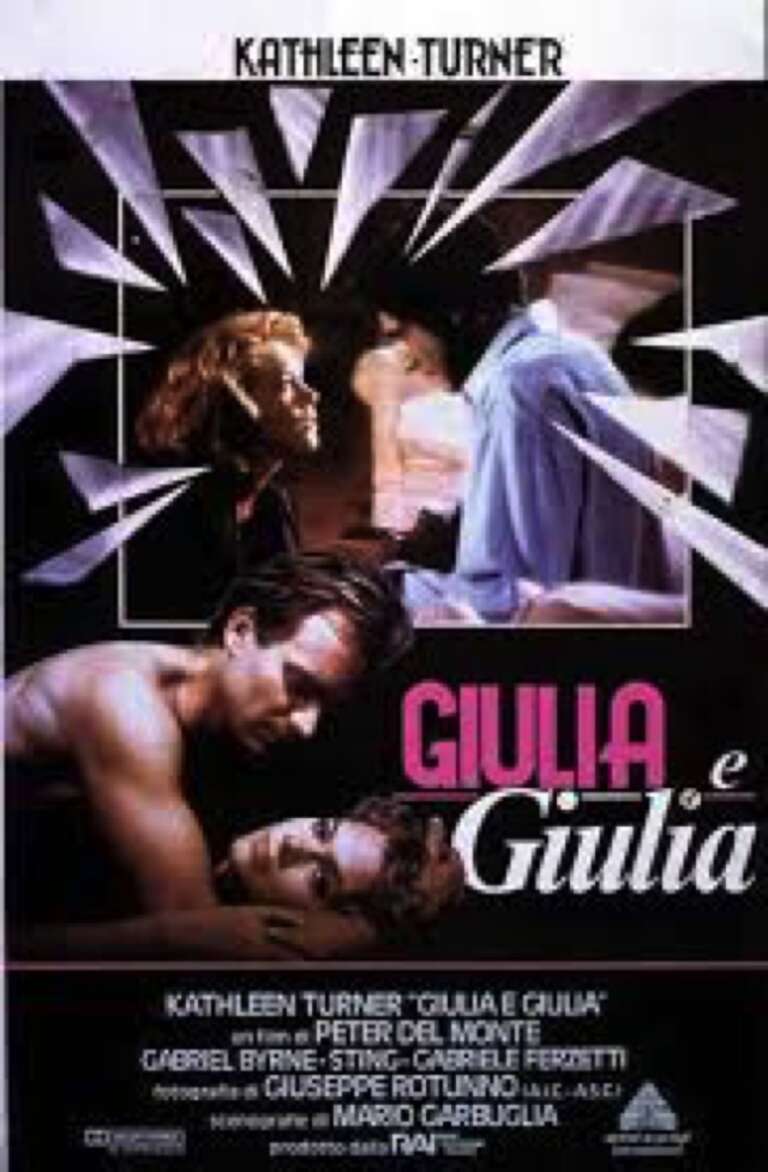
Julia and Julia
In an accident while on honeymoon, Julia loses the man she has just married. Six years later, she comes back to Trieste and her life undergoes a split, between real life and what could have been. In the role of Julia’s lover we recognize a young Sting. The first scene is set on Strada Belvedere, which today is considered the longest bike path along a lagoon in Europe, connecting Grado and Aquileia. Many interiors are shot in Trieste at the Hotel Savoy: considered the most elegant hotel of the Austro-Hungarian Empire, where still today from its windows you can enjoy
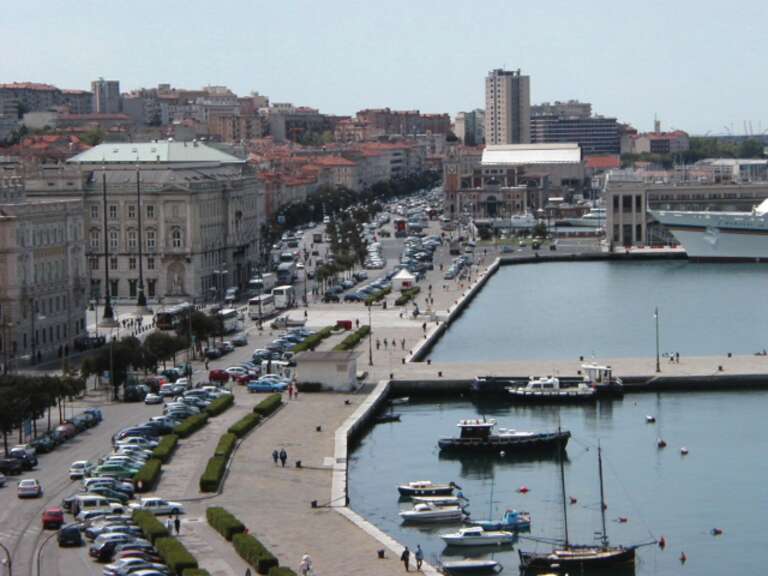
Love, Lies And Soccer
The ball is in the middle, the referee’s whistle blows, and an hour of battle follows. For seven friends this is the classic Thursday night: the amateur soccer match. They are on the pitch and their wives in the stands, on the field and in life, where more than one of them will have to review his role on and off the pitch. In addition to Piazza dell’Unità d’Italia and the waterfront, the film reveals hidden or lesser-known corners of Trieste such as the church halls of Don Bosco and that of Santa Rita, the Chiarbola sports centre, which until
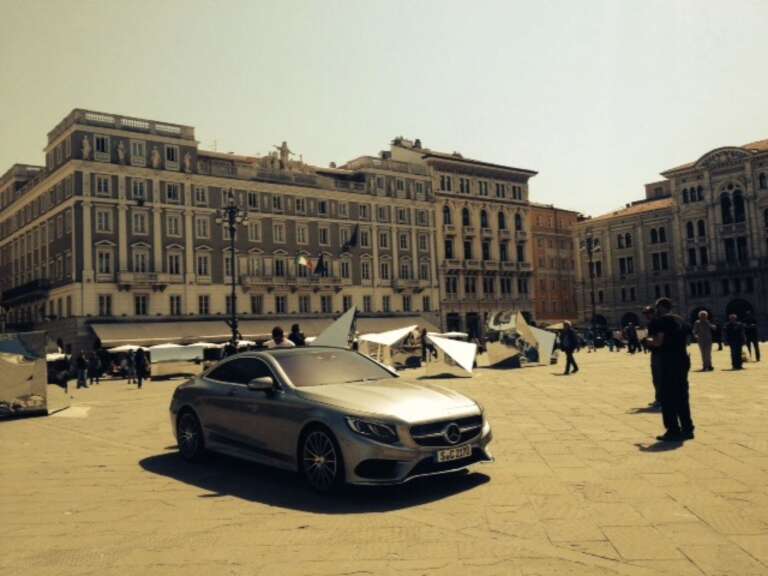
Mercedes Benz S-Class Coupé
The streets of Trieste are the backdrop to the ad, which has never been shown in Italy. The elegant and modern car parade, the first light of morning, the city’s waterfront on the Piazza dell’Unità d’Italia, full of mirrors and reflections. Among the images, the entrance of the Sandrinelli tunnel going through the Montuzza hill can be glimpsed. Above it the Scala dei Giganti, called “The Steps of the Friars”. Even today at the top of the steps there is a fountain: in the shape of a simple shell which harks back to the symbol of a fascio – divided
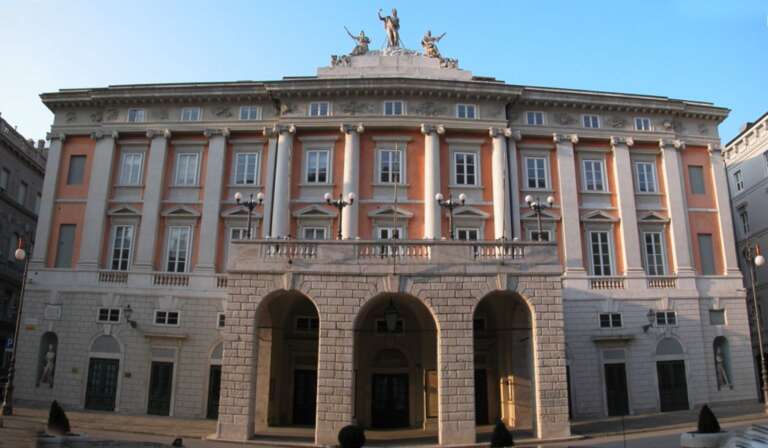
Mother Teresa
‘Mother Teresa’ is a television mini-series in two episodes aired on RaiUno (italian first national tv channel) and BBC ONE that traces the milestones of the life of a nun, from her hometown to her exhausting work with the poor of Calcutta and, later, with the rest of the world. The drama, starring Olivia Hussey, was shot in Friuli Venezia Giulia. The director Fabrizio Costa chose Trieste and Pordenone as sets. Thus, he transformed the Verdi Opera Theatre and the Prefecture building of Trieste into the Nobel Institute in Oslo, where Mother Teresa was awarded the Nobel Peace Prize. For
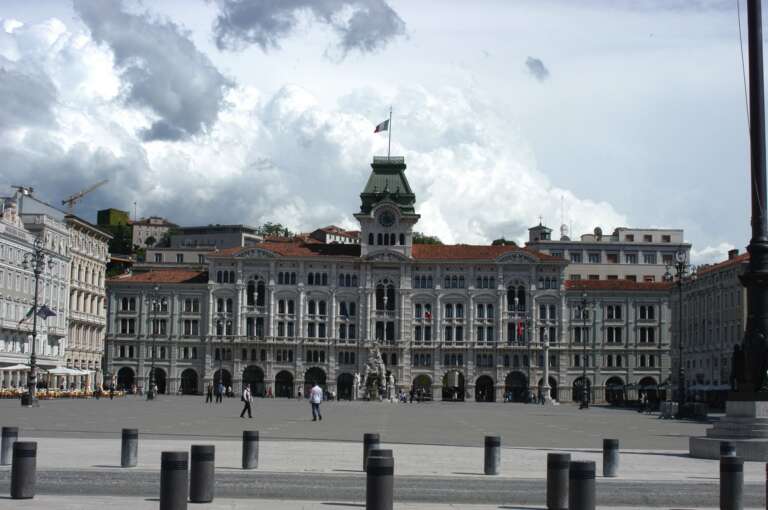
Nora
Based on the novel by Brenda Marrox, the film tells of the love story between James Joyce and Nora Barnacle, a young and lively chambermaid. After an initial meeting in Dublin, passion exploded and the two decided to escape to Trieste in search of fortune and freedom. It is a very difficult love life ,where only the love and devotion of the young woman can save the talent of Joyce. How do you make a film about Joyce without using Trieste as a set? Impossible! The Irish director chose to shoot the film catching glimpses of a city that breathes
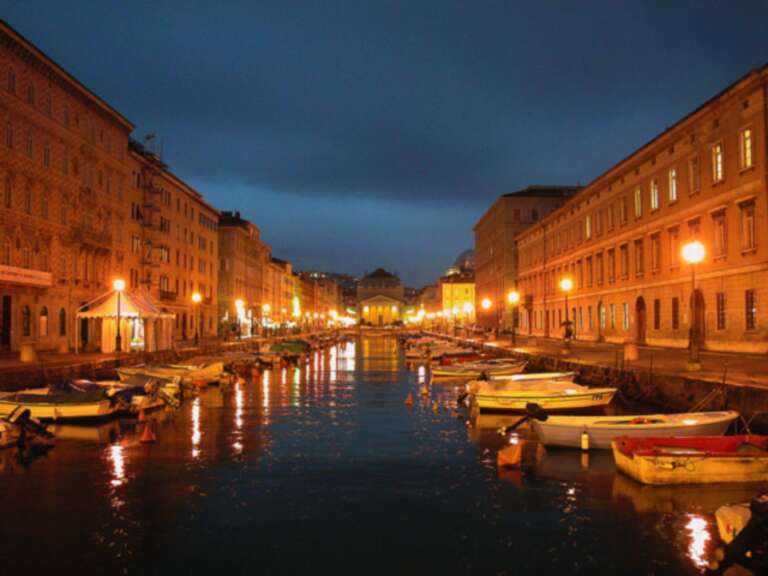
One for all
Noir set in a fascinating and obscure Trieste that tells, flitting between past and present, the story of three friends dogged by the memory of a tragic episode of their childhood that has forever left its mark. Gil, the head of the group, now calls his old friends for the to settle things once and for all. Numerous locations were chosen in Trieste and the province. Among them: the Coroneo Prison, built in 1911 by the Austrians, the neighbourhood of Roiano, often mentioned when talking of the astrophysicist Margherita Hack who lived here until her death in 2013.Where now there
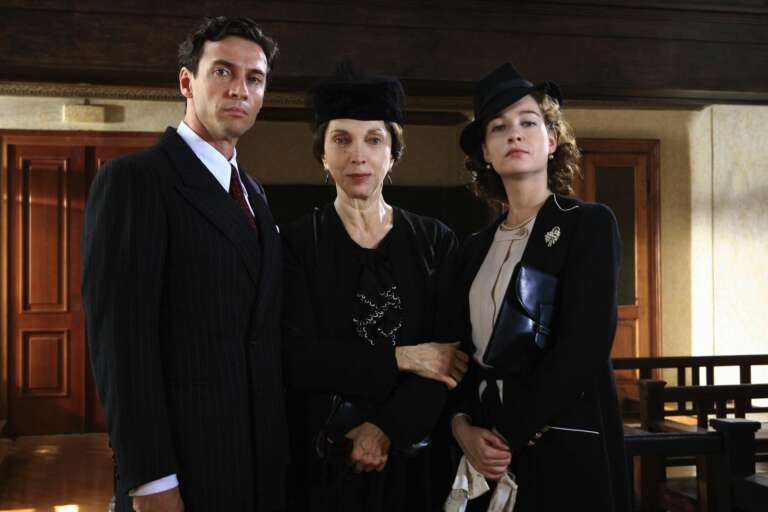
Rebecca
Jennifer, a young English lady, marries the respectable widower Max De Winter and moves into his mansion, Manderley. Here she immediately clashes with the ghost of Rebecca, the first wife of Max, and Mrs. Danvers, the housekeeper who lives worshipping the memory of the deceased. In two parts, the RaiUno film starring Alessio Boni and Cristiana Capotondi, is a remake of the Alfred Hitchcock movie, which, in turn was based on the Daphne du Maurier novel written in 1938. The film is set between Monaco and England but in truth the mansion Manderley is nothing more than the castle of
Se ne dicon di parole
Giuliano Palma in a boat in the Gulf of Trieste. You don’t believe us? The artist filmed this videoclip radio smash hit in 2008. The beginning of the video was shot in the former Seamen’s mission – Casa del Lavoratore Portuale, which was transformed for the occasion into a recording company. Today it houses the main associations that deal with the cinema in Trieste. Also in town, you can see the Protti Gallery, a shopping mall in the city center, Corso Italia, via Mazzini, the coastal road, built in the 1920s and one of the main access roads to the
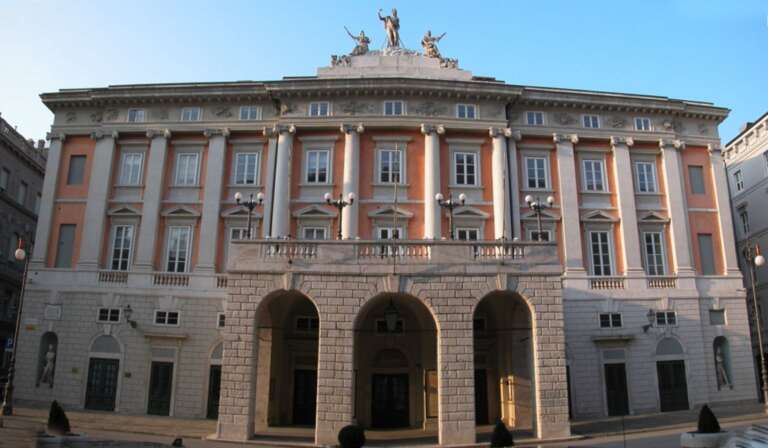
Sempre di Domenica
‘Sempre di Domenica’, the second single from the album ‘unò-dué’ – ‘One-Two’ – is a song by the Roman singer-songwriter Daniele Silvestri. Silvestri got Ago Panini to make this videoclip, shot entirely in Piazza del Teatro Giuseppe Verdi in Trieste city centre, just a few steps away from Piazza dell’Unità d’Italia. On the square, which is a pedestrians only zone, overlooking one side is the Opera Theatre which was the first in Italy to be named after Giuseppe Verdi. The building started out as the Teatro Nuovo (the New Theatre) and is one of the oldest working opera houses. The

Senility
Based on the novel by Italo Svevo. Emilio Brentani, a writer from Trieste who is going through a creative crisis, lives with his sister Amalia. Weary of the monotony of his life, he falls head over heels in love with the beautiful, young Angiolina. The difference in age and character results in their constant bickering and mutual misunderstandings, while his sister tries to get married to a simple local artist. Entirely shot in Trieste, and starring Claudia Cardinale, the director shows the corners of the city described by Italo Svevo. We recognize Molo Audace – Pier, the Old Fish Market,
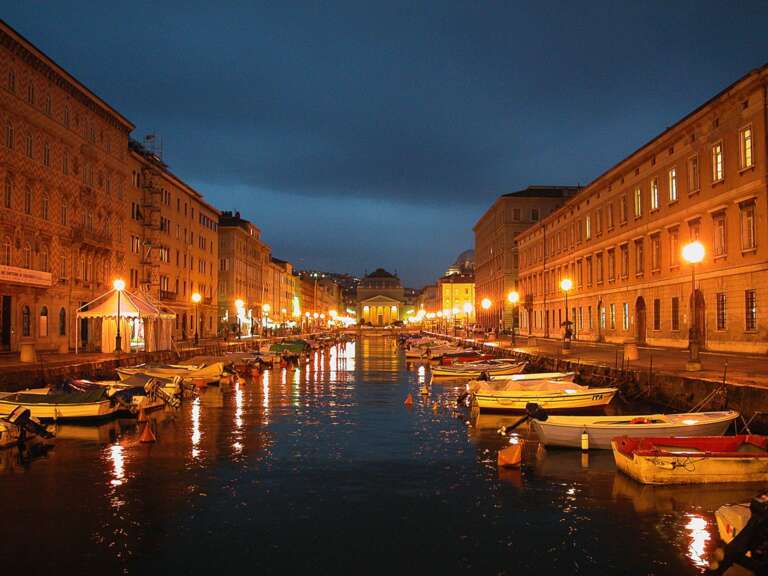
Simple emotions
Fourth and final single from Nek’s album ‘Un’altra direzione – Another direction’, the song ‘Simple emotions’ by Nek seems like a pop-rock song. The song is about a failed and melancholic love story. What better place than Trieste to shoot the videoclip? Made in the month of May, in the video you can recognize the most picturesque parts of the city, such as the Molo Audace – Pier, the old Port – Porto Vecchio, the railway station of Campo Marzio and the steps of the main site of the University of Trieste. This building, which was inaugurated in 1950, is
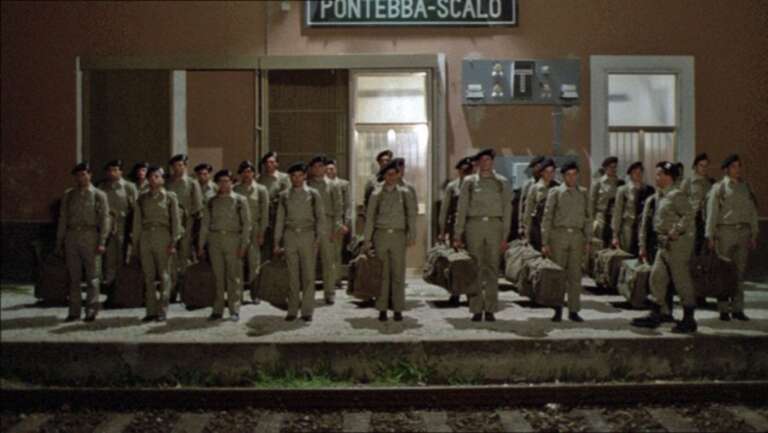
Soldiers – 365 to dawn
After the month of basic training, a group of draftees belonging to the third draft is transferred to a barracks in Friuli, on the border of the then Yugoslavia. The plot focuses on the relationship between Lieutenant Fili, a fanatic of strict military discipline, and Private Scanna, a lower-class Roman youth. Many of the scenes of life in the barracks were shot in the area of the Refugee Collection Centre in Padriciano, on the Trieste Karst, which today houses the Museum. Key stop on the “journey down memory lane”, for those who want to learn or know more about the

Solo un uomo
This title track of Niccolò Fabi’s album, ‘Solo un uomo’ was shot entirely in Trieste. The song tells the story of an ‘everyman’ who can live in any city. For this reason Fabi chose Trieste, which, despite its strong identity, is recognizable but at the same time ‘mistakable’. A curious fact: the song was rejected in the selection for the Sanremo Festival in 2009 because it was considered too sad and melancholic. We can recognize the locations between the interior and the terrace of the former Seamen’s mission – Casa del Lavoratore Portuale, now home to the Casa del Cinema,
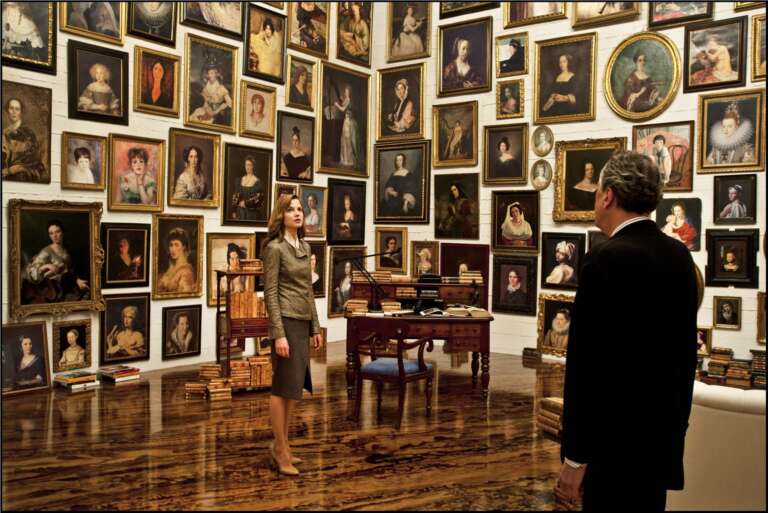
The Best Offer
The film’s protagonist, Virgil Oldman, is an eccentric genius, and art expert, known and appreciated all over the world. He always runs away from feelings, until a mysterious woman invites him to her villa to make a valuation. It is to be the beginning of a relationship that will change his life forever. Music by Ennio Morricone. Tornatore chose Trieste again, showing the Prefecture building and the Chamber of Commerce, Piazza Oberdan and the area of Largo Panfili with the Lutheran Church. Also chosen was ITIS, a public organisation for needy individuals, it is a historical institution founded in the
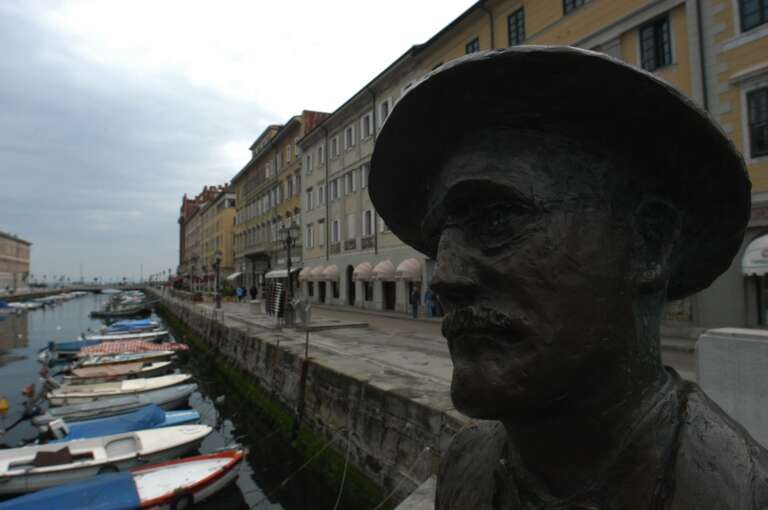
The Confessions of Zeno
The Confessions of Zeno is a TV movie based on the novel by Italo Svevo. True to the novel, it analyzes the psychology of Zeno Cosini, who is ‘sick’ and unfit to live. Through multiple attempts, Zeno seeks the path of healing, only to get the opposite effect. Shot entirely in Trieste, the birthplace of the writer, the film manages to capture the hidden corners of this fascinating city. For lovers of literature and especially the books and the characters of Italo Svevo, walking through the streets of Trieste will be like being the protagonist of his novels. Some of
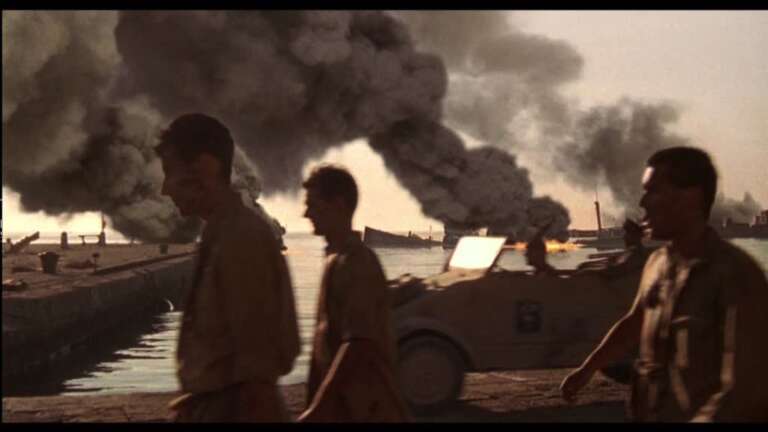
The English Patient
During the Second World War, a young Hungarian pilot is found disfigured by burns. He remembers neither his name nor his past. For everyone he is the English Patient. He is looked after by Hana, a young French-Canadian nurse, in an old ruined monastery where everything is to acquire a meaning and a name. In a brief scene the director Minghella uses the Old Port – Porto Vecchio of Trieste to represent the port of Tobruk in North Africa, in June 1942 when it was conquered by the Germans. Today Porto Vecchio is still awaiting redevelopment and is open to

The Girl and the General
During the First World War, after the defeat at Caporetto, a soldier called Tarasconi captures an Austrian general. Aided by the young Ada, a local peasant, he decides to take him to his superiors to get a gold medal and the prize of 1000 lire. An unlikely friendship develops between the three of them. The exteriors of the film were shot on the Karst near Pesek and in the Rosandra Valley, in Resia, in Cividale, Pertegada di Latisana, Palazzo dello Stella and Venzone, a town which after being struck by an earthquake became a kind of ideal permanent soundstage for
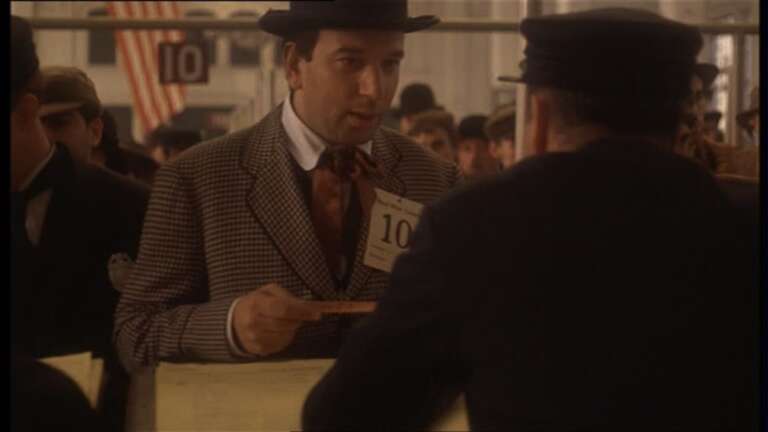
The Godfather – Part II
In 1901 Vito Andolini, a young Sicilian boy, reached the U.S.A. where he takes the name of Vito Corleone, by mistake. In a short time, he builds up an empire founded on gambling and prostitution in Little Italy, New York. His son, Michael, becomes the new Godfather, but his power leads to his isolation. Trieste becomes New York for a day. Coppola films the scene of the immigrants landing for health checks at Ellis Island at the former Fish Market on the waterfront. The building is nicknamed ‘Santa Maria del Guato’ because it is shaped like a church, and ‘Guato’
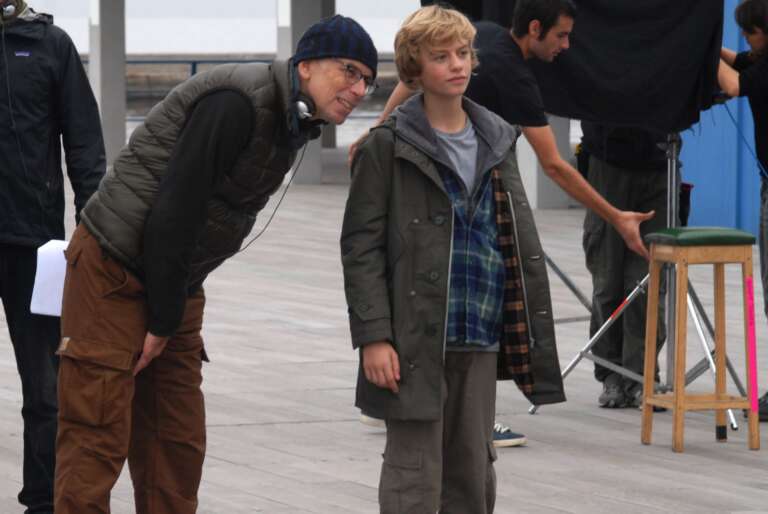
The Invisible Boy
Michele Silenzi is a shy thirteen-year-old boy from Trieste who is regularly picked on by school bullies. One day he discovers that he actually has a power, a superpower: invisibility… It will be only the first in a series of breath-taking discoveries that will transform his life and everything around him. The Oscar winner Salvatores shoots the entire film in Trieste and elects it again for the sequel. One of the locations is Piazza Barbacan where it is possible to admire the Arch of Riccardo, one of the Roman gates of Trieste from the first century BC. The film also
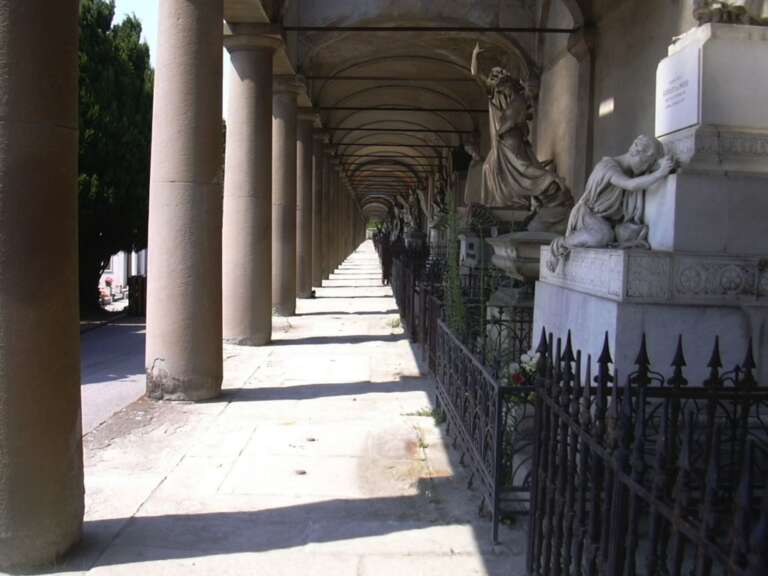
The Power Of The Past
Sergio, forty years old and writer of books for children, lives in ‘his’ completely ordered world. After the death of his father, a strange character bursts into his life overturning all his certainties and leaving him with unanswered questions. The director chose Trieste for its past and its history. What better place to represent a frontier territory, a border crossing pulsating with spies? The result is a city more lived-in and less postcard-like. Among the locations sighted Grado, the sunny island and the Cemetery of Sant’Anna in Trieste. In its avenues, almost like in a open-air museum, creations of local
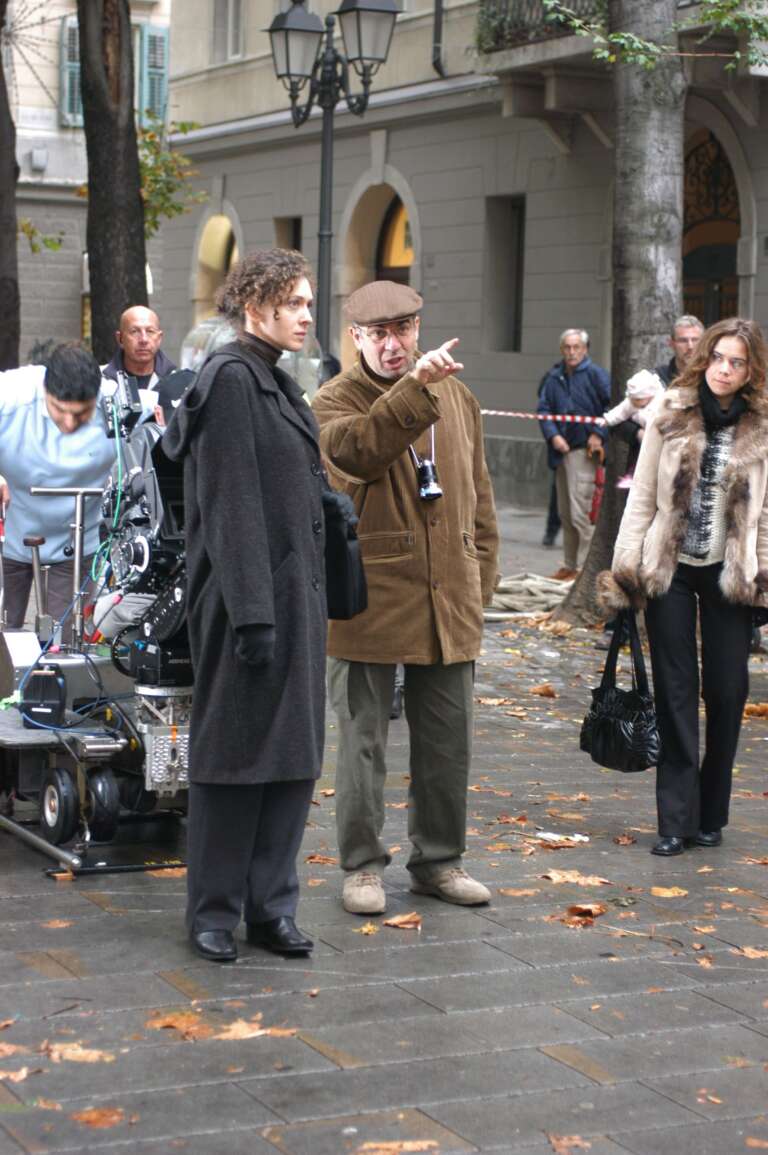
The Unknown Woman – The Other Woman
Irena is ‘unknown’, a former Ukrainian prostitute who has arrived in Northern Italy to escape from the ghosts and nightmares of the past. She finds work as a maid in a family of goldsmiths, the Adachers, and has an apartment to live in. She wins the confidence of little Tea, but suddenly the past comes back to haunt her. The director chose Trieste fascinated by its magic, the special light and the mystery that surround the city. Shot entirely in Trieste, the location which stands out is the Assicurazioni Generali building, an interesting architectural example of nineteenth century Trieste. In
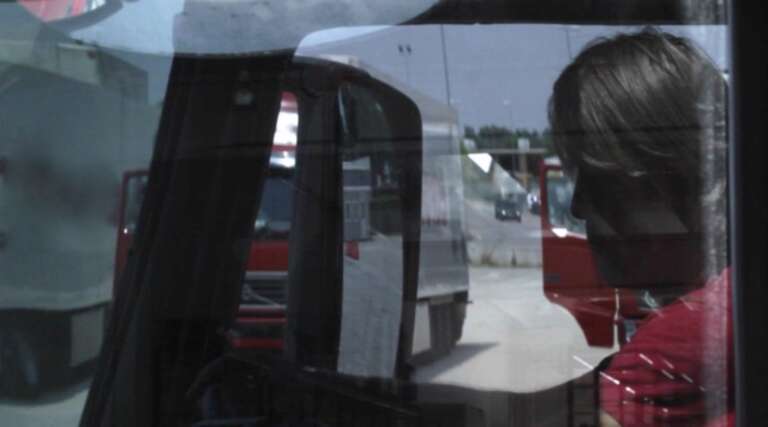
TIR
TIR was initially planned as a documentary but which then became a fiction film and winner of the Golden Marcus Aurelius prize at the Rome Film Festival in 2013. The film follows a man, who for financial reasons, gives up his job as a teacher, and become a truck driver. Throughout the film the viewer is next to him,”on the road”. Filmed mainly in the highways of the area, some scenes were filmed at the Fernetti autoporto the HGV freight village in Trieste, one of the most important transit points for Italian goods going to the Balkans, others in front
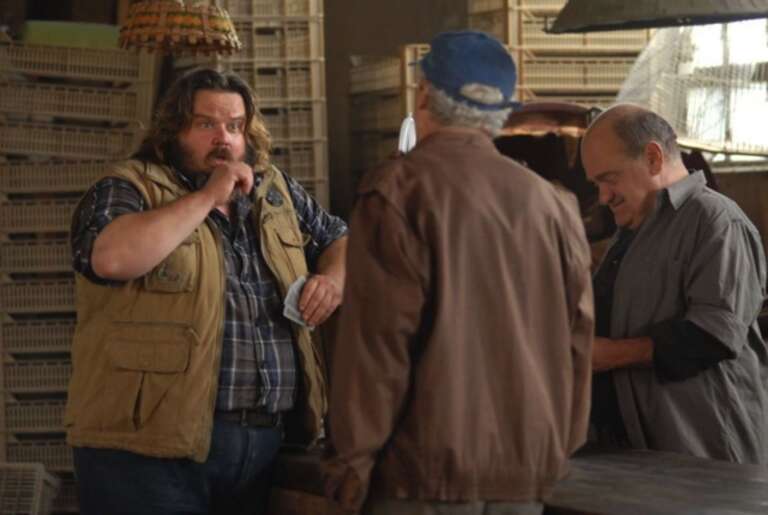
Zoran, My Nephew the Idiot
Paolo Bressan: forty, adrift, cynical and misanthropic, spends his days in the inn of a small village near Gorizia. One day his nephew Zoran, shows up, a strange sixteen-year-old brought up in the mountains of Slovenia. Paolo has to take care of the lad and he discovers the boy’s bizarre gift: he is brilliant at darts. For Paolo it is an opportunity to take revenge against the world. Acclaimed by the public at the Venice Film Festival in 2013, the film did not have the usual promotion: the invitation was to visit Casa Zoran, a villa transformed for the occasion
